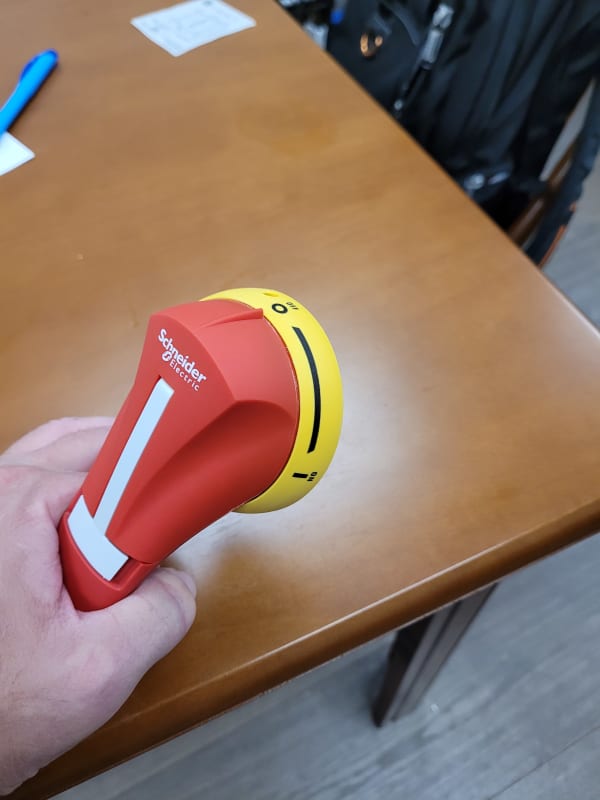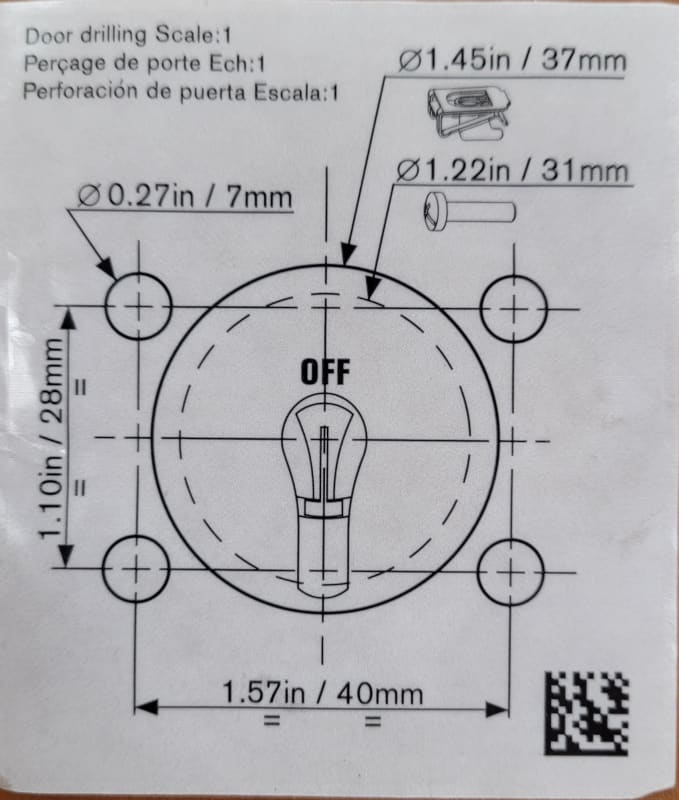PaulKraemer
Electrical
- Jan 13, 2012
- 155
Hi,
I am going to be using a control panel door mounted disconnect for which the handle looks like this ...

... This handle is constructed so that it will rotate 90 degrees clock-wise from the OFF position to the ON position. It seems this will allow me to mount this in a few different orientations. I am trying to decide which of the following would be a better choice:
(1) ON with the handle pointing to the left, OFF with the handle pointing down.
(2) OFF with the handle pointing to the right, ON with the handle pointing down
If anyone can tell me if either of these orientations is generally preferred, I would greatly appreciate it.
Thanks in advance,
Paul
I am going to be using a control panel door mounted disconnect for which the handle looks like this ...

... This handle is constructed so that it will rotate 90 degrees clock-wise from the OFF position to the ON position. It seems this will allow me to mount this in a few different orientations. I am trying to decide which of the following would be a better choice:
(1) ON with the handle pointing to the left, OFF with the handle pointing down.
(2) OFF with the handle pointing to the right, ON with the handle pointing down
If anyone can tell me if either of these orientations is generally preferred, I would greatly appreciate it.
Thanks in advance,
Paul

